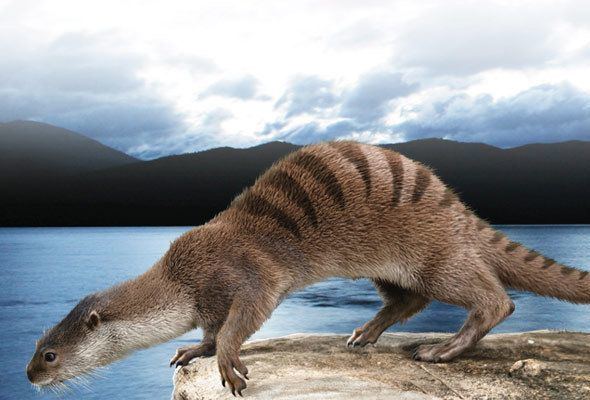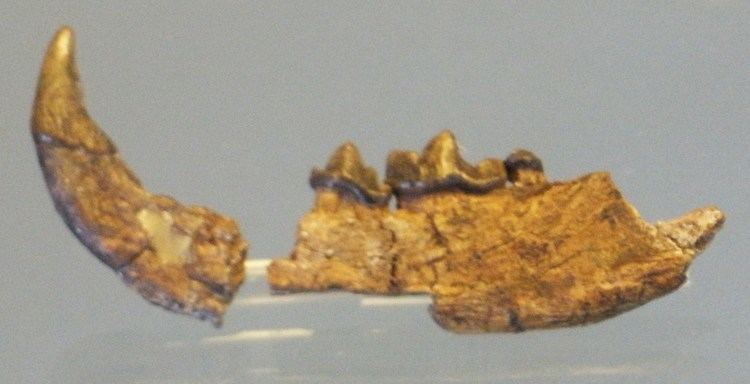Suborder Caniformia Phylum Chordata Order Carnivores | Clade Pinnipedia | |
 | ||
Genus †PotamotheriumGeoffroy, 1833 Similar Carnivores, Enaliarctos, Puijila, Plesictis, Acrophoca | ||
Potamotherium ('river beast') an extinct genus from the Miocene epoch (late Neogene), which has been assigned both to the mustelids and to the pinnipeds.

The genus was first described in 1833. In 1988 it was assigned to the family Mustelidae and the subfamily Oligobuninae. However, it has been suggested that Potamotherium was not a mustelid at all, but rather a very basal pinniped. Two species have been identified in the genus: P. valletoni, the holotype, and P. miocenicum.

Finds range from the mid-latitudes of Europe and North America, dated from the Oligocene/Miocene boundary and surviving through to the end of the Miocene. It has been interpreted by several researchers as a basal, non-marine ancestor of seals and sea lions, suggesting a freshwater phase in the evolutionary transition of pinnipeds from land to sea. If Potamotherium was indeed a pinniped instead of a mustelid, its relatives were possibly early bears (whose ancestors at the time were small and generally weasel-like).

Physically, Potamotherium resembled a modern otter, and was 1.5 metres (5 ft) long, with an elongated, slender body and short legs. With a flexible backbone and a streamlined shape, it was probably a good swimmer. Analysis of fossils suggests that Potamotherium had a poor sense of smell, but made up for this with good vision and hearing.

